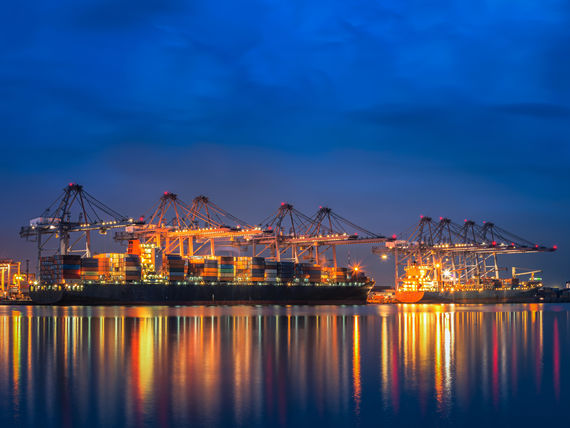World's largest automated terminal begins trials

December 11, 2017 - On Sunday, Shanghai Yangshan Deep-Water Port's Phase IV container terminal started its trial operations. The 550-acre, $1.8 billion facility is the latest expansion of the Port of Shanghai's complex on Yangshan Island, which has deeper water than the port operator's mainland terminals.
The Port of Shanghai is already the busiest for container traffic in the world, handling a record 37 million TEU in 2016, and the new automated Phase IV terminal will cement its leading position with an additional seven berths and 4-6 million TEU of capacity. Phase III began operations in 2008, but the global financial crisis delayed construction of the long-planned Phase IV until 2014.
According to Chinese state media, Phase IV is the world's largest automated container terminal, with computer-controlled bridge cranes, AGVs and rail-mounted gantry cranes. All of the equipment is Chinese-made, and the facility also uses a Chinese-designed automated terminal management system. About 100 out of a total of 280 pieces of the automated equipment have already been delivered and are in testing.
"The automated terminal not only increases the port's handling efficiency, but also reduces carbon emissions by up to 10 percent," said Chen Wuyuan, president of Shanghai International Port Group, speaking to Xinhua.
World's biggest port
Yangshan is the biggest deepwater port in the world. Phase I was finished in 2004, and the following year construction wrapped up on a 20-mile, six-lane bridge to connect the facility to the mainland. Extensive land reclamation allowed for the construction of Phases I through III on new ground adjacent to the islands of Greater and Lesser Yangshan, which were previously home to small fishing communities.
The port handles about 40 percent of Shanghai's exports, and its operators hope to see it grow as a transshipment hub as well. As of 2016, it operates under a free trade zone status, which speeds up customs procedures and facilitates transferring or storing foreign-origin cargoes.
Source: The Maritime Executive


